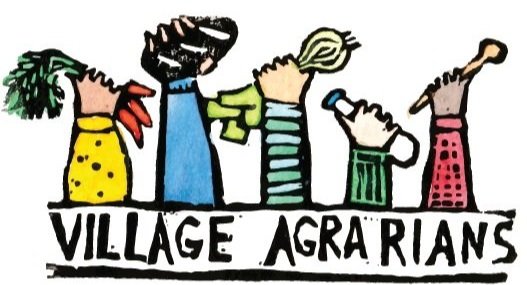My entry point into the world of organic, community focused agriculture was through the first CSA share I ever participated in. The CSA, which stands for Community Supported Agriculture, is a popular model for small scale farms to get produce directly from the farm, to the people. I attended an information session at my university in Oregon where two local farmers came to introduce the idea of Community Supported Agriculture to students. The farmers had prepared some roasted parsnip snacks to share while discussing their commitment to organic principles, their history with farming, and the ways the CSA model benefits the whole community. We learned that by entering into a partnership and paying for a share of the harvest at the start of the season, the community invests in the farm and the farmer. This ensures the farmer has the necessary capital to invest in infrastructure, tools and seeds at the start of the season. In turn, the community receives a share of the harvest every week.
For me, the CSA was an entirely new idea. The invitation to participate in something different from the supermarket was exciting: the shiny promise of fresh vegetables would make every week feel special, and while the produce would be expected, the variety would be a surprise to look forward to. My friends and I faced just a couple of issues, one being that the share provided enough vegetables to feed a family, and the other, which felt like more of a barrier, was the commitment to paying up front for months worth of food.
Naomi picking raspberries in Oregon.
Our desire to enter the community of the farm by becoming CSA members led us to form a small community in our household. If one share provides enough to feed a family, we could become a family, sharing food and cooking together. We talked to the farm about our financial situation as students, and luckily they allowed us to split the payments, making it possible for us to become part of the community for the season. And so began our adventure as a new CSA household. Each week we would wait eagerly for the email from our farmer (our farmer! It was so exciting to know her!) featuring a beautiful photo of greens, onions, tomatoes, as well as things I had never heard of, like kohlrabi and celeriac. We would go together to the car park across the street from campus where we picked up our vegetables every week. At home we tried new recipes, ate lots of salads, and turned many meals into potlucks.
Looking back, I know that the first season of joining a CSA catalyzed a change in my relationship with food and agriculture. I started thinking about things I had never considered before. I knew my farmer, Carrie, was getting paid a fair wage, but what about the people who grew the food for the supermarkets? What were their wages like? And all of those heads of broccoli and boxes of berries and perfect apples didn’t come from nowhere. Where were they grown? And how did they get to the shelf, lined up all uniform and shiny?
In Aotearoa, the majority of the food grown here is shipped overseas. The history of conventional farming as a colonial project to feed Britain shapes many practices and standards in conventional agriculture today. But Aotearoa has a longer history of organic and community farming than conventional agriculture. Maori horticulture and gardening traditions are far more productive, generative and able to sustainably feed communities than conventional methods. Luckily more people are recognizing and honoring this knowledge every year.
Our goal at Village Agrarians is to support as many people as possible to get involved in local, organic, and equitable food systems. Finding an entry point is essential, and for me, it was joining a CSA. As interest in local food systems grows, we are digging into questions of access, affordability and equity. We are asking questions like, what is the best way to support new growers who want an active role in feeding their community? How can the CSA model be affordable to everyone who wants to be involved? Is it possible for farmers to offer a sliding scale membership where members pay according to their ability? Maybe door delivery with an electric vehicle could help busy families get fresh vegetables, while also acting in a way that is mindful of climate change. In my eyes, we must support a change to sustainable and equitable agriculture with and for each other. We hope you will get involved too, because together we can shift far more than any one of us could alone.
By Naomi Morgan













